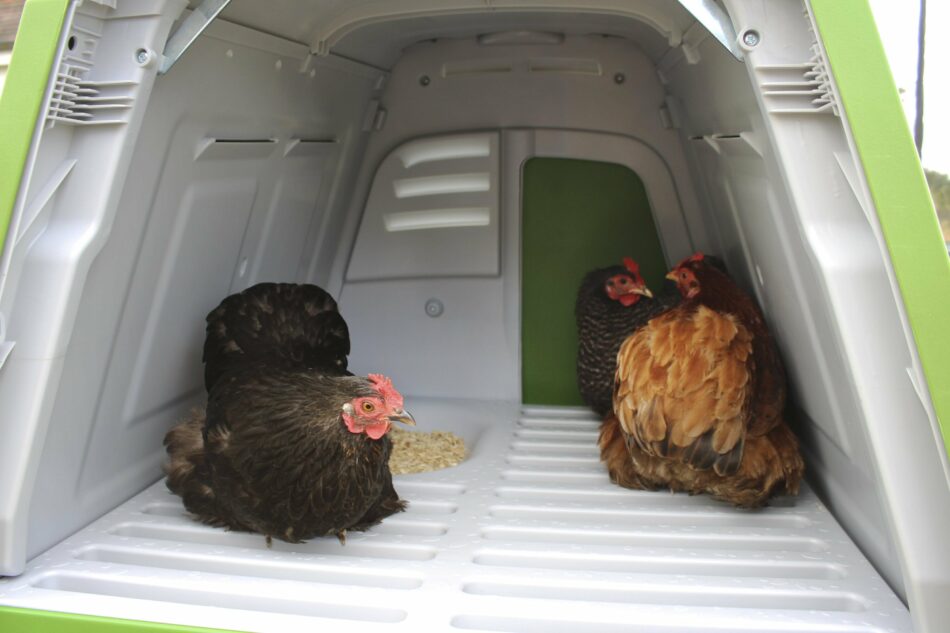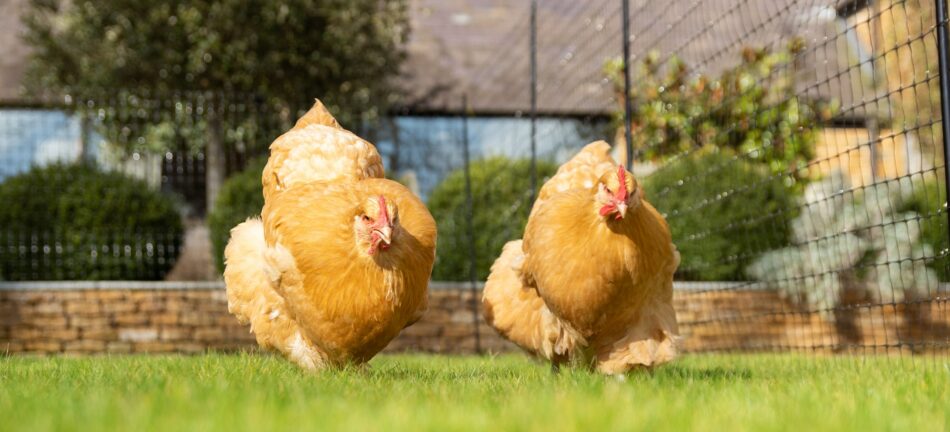What is a broody hen, and how do you stop her being broody?
Most hens lay their eggs with minimum fuss. They might make a bit of noise to announce their egg-laying achievement but will soon return to the daily business of exploring and scratching for food. Some hens, however, do make a bit more fuss. To be more accurate, these hens are known as broody. A broody hen is one who sits on her egg with every intention of staying there until it has hatched – no matter whether the egg is fertilised or not. This is very useful if you want to hatch some chicks, but otherwise, it can be a problem. So then, how do you stop a hen from being broody?
The cause of broodiness
The cause of broodiness is linked to body heat, backed up by maternal instincts. Hens who are cooped up together in a hot henhouse may suddenly heat up to a level that makes them think “I’m going to hatch an egg!”. Certain chicken breeds seem more susceptible to broodiness than others, with the Silkies and Cochins being particularly moody-broody.
Signs of broodiness
A broody hen undergoes a personality change. The most obvious sign of this is her refusal to leave the nesting box. She’ll sit there with the air of a bird who will happily wait until Doomsday for the egg to hatch. This misplaced dedication will also make her grumpy and liable to peck or cluck angrily if you try to move her.
When you do manage to oust her from the box, she’ll simply head back there again and resume her brooding. Once she feels established in her new maternal role, she will fluff out her feathers and may begin to self-pluck her chest feathers to line the nest.
How to stop a hen from being broody
Time to get moving
Appearances can be misleading. Your hen may look as though she’ll sit in the box for eternity, but in reality, she’ll only stay there – usually – for three weeks. This is the length of time it takes a chicken egg to hatch. This means, if space allows, you can simply let her brood for 21 days, and once the mood lifts, she’ll return to business as usual. But, if you don’t have a cockerel and don’t want to rear your own chicks, this can be frustrating and you’ll want to break your hen from her broodiness.
You also need to make sure your hen gets enough food and drink during this time, which can be difficult for a hen who doesn’t want to leave their nesting box. This may involve forcibly removing her from the box and shutting it off until she has taken refreshments. Be sure to collect any eggs immediately when you do get the opportunity and be sure to always wear sturdy gloves as a precaution when attempting to move any broody hen. This will prevent your hands from getting pecked!
Try frozen veg
A common anti-broody trick is to place a packet of frozen peas or sweetcorn kernels wrapped in a blanket or tea towel underneath the hen in the nest box. Crushed ice cubes in a bag will do the trick, too. This has the dual impact of cooling the chicken down and making life in the nest box too uncomfortable for brooding.
Nest box obstacle course
Sometimes a simple obstacle such as a plant pot or a couple of bricks will have the desired effect. If the hen can’t access the nest box, she can’t sit there and brood. Fortunately, the Eglu Cube chicken coop has a central divider with a sliding door, which means you’re simply able to close the nest area off from the rest of the coop.
Set up a broody enclosure
Some chicken keepers use a so-called “broody enclosure” to break the habit. This is a wire cage or crate, in which the chicken is placed along with food and water. After three days, this gentle form of solitary confinement will usually break the broody habit. The signs that the brood mood is over are obvious – the hen will stop fluffing out her feathers and will stalk around the cage, rather than sitting and brooding.
Fancy chicks?
Then again, you could purchase some fertilised eggs and let the broody hen resume as she was. If you do want chicks, this is by far the easiest, and most natural way of producing them – under the fluffy belly of a broody hen.
Omlet and your hens
At Omlet, we design products that help find solutions to all your pet questions, like what’s the best coop for a broody hen? With unique products like the Omlet Eglu Cube chicken coop and Walk In Chicken Runs, our expert designers strive to continue creating the best environments for all pets – feathered or furry.
This entry was posted in Chickens


